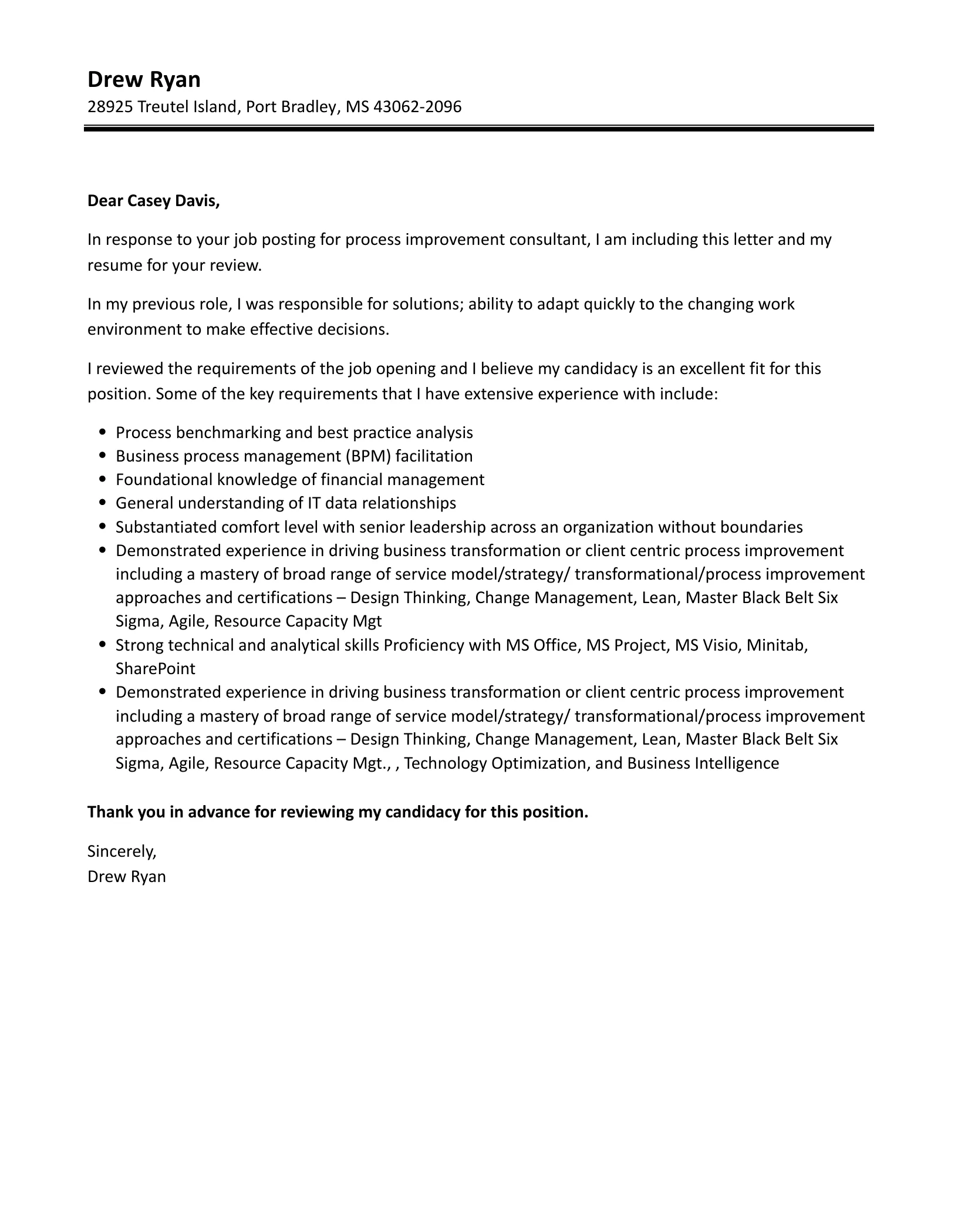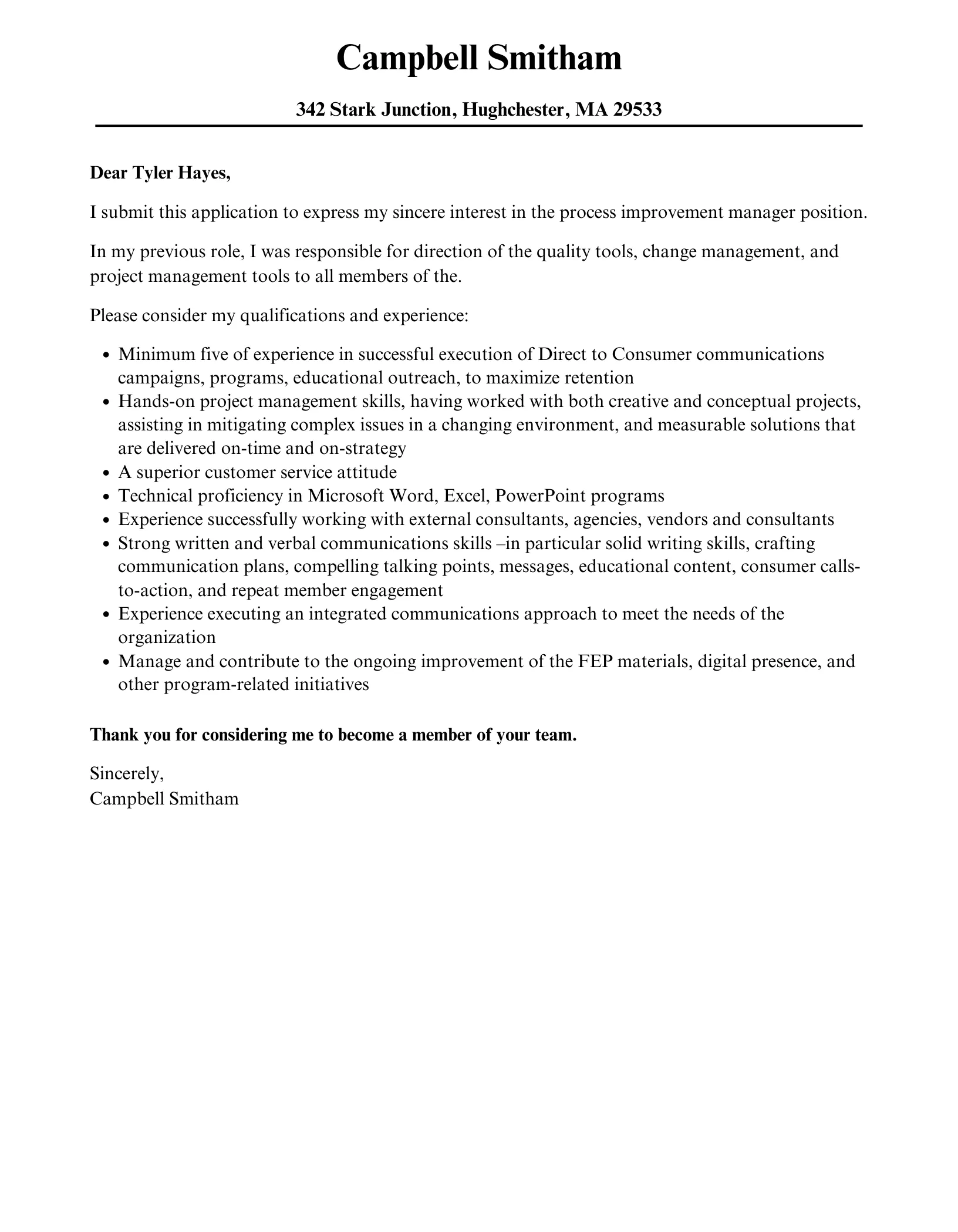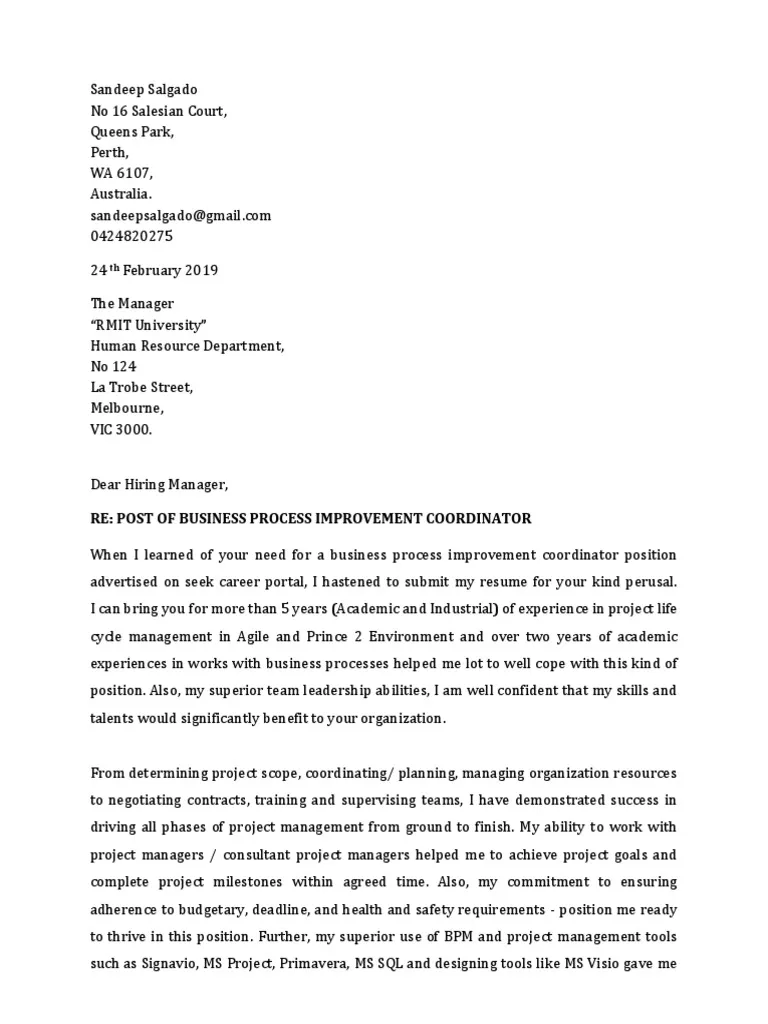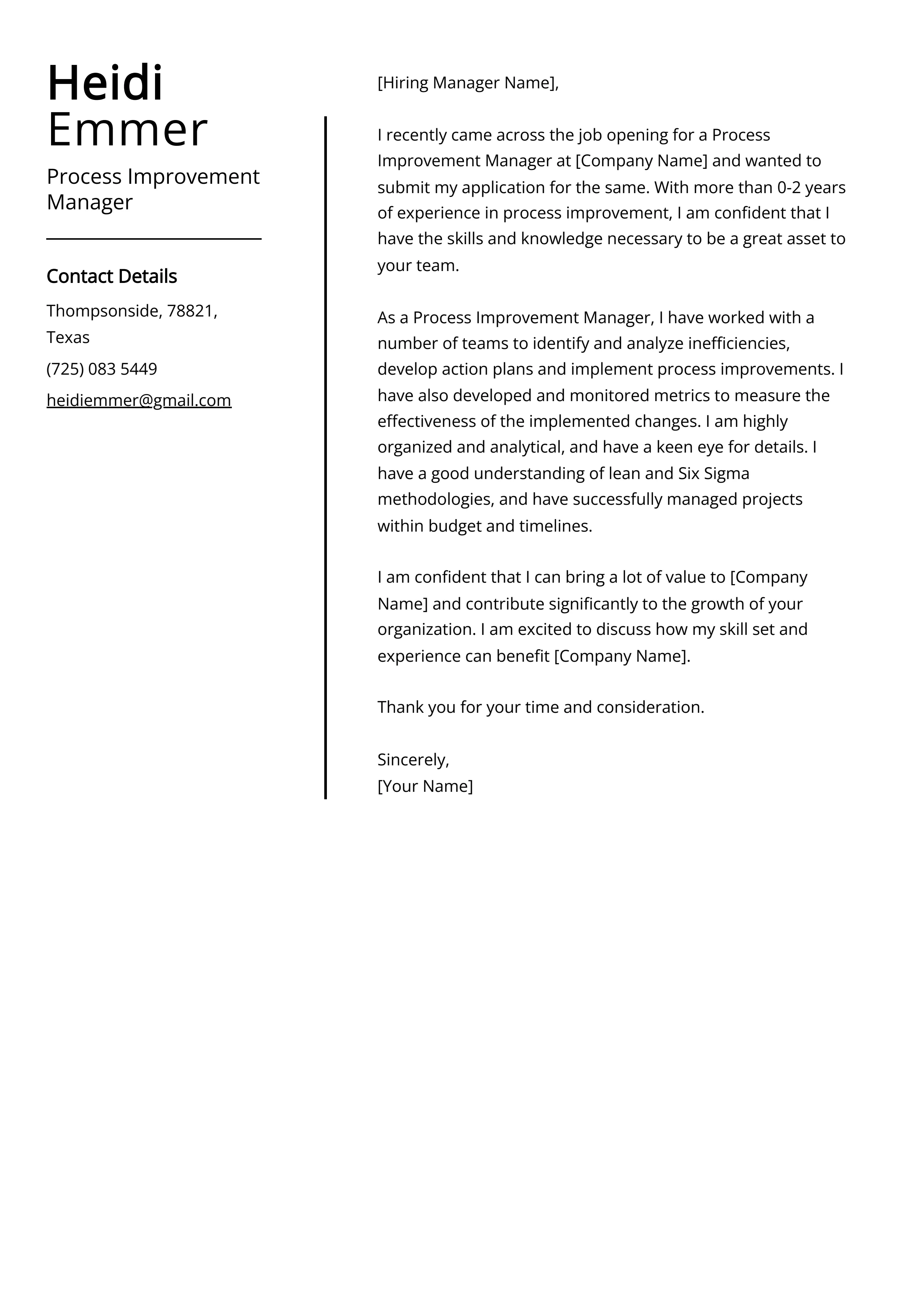A process improvement cover letter is your opportunity to showcase your skills and experience in a way that makes you stand out. It’s a chance to demonstrate your understanding of process improvement methodologies and how you’ve applied them successfully in previous roles. Writing a compelling cover letter can significantly increase your chances of landing an interview and ultimately securing the job. This guide provides actionable tips to help you craft a process improvement cover letter that grabs attention.
Highlighting Process Improvement Skills
The core of any successful process improvement cover letter is highlighting your relevant skills. Recruiters and hiring managers are looking for candidates who can demonstrate proficiency in areas like lean methodologies, Six Sigma, business process re-engineering, and other relevant frameworks. Your cover letter should explicitly mention these skills and provide specific examples of how you’ve used them to achieve tangible results. It’s not enough to simply list these skills; you need to show how you’ve applied them to solve problems and improve processes.
Quantifying Achievements in Cover Letter
One of the most effective ways to impress a hiring manager is to quantify your achievements. Instead of saying you improved efficiency, state the percentage increase in output or the reduction in processing time. For example, “Improved order processing efficiency by 15% by implementing a new workflow system.” Use numbers to illustrate the impact of your work, showing that you can deliver measurable results. This approach provides concrete evidence of your capabilities and makes your claims more credible. Focus on the benefits your actions brought to previous companies.
Using Action Verbs

Using strong action verbs is essential for making your cover letter compelling and dynamic. Instead of using passive language, choose verbs that demonstrate initiative and drive. For instance, use verbs like “implemented,” “optimized,” “streamlined,” “analyzed,” “led,” “managed,” and “developed” to describe your accomplishments. These verbs paint a vivid picture of your capabilities and make your cover letter more engaging. The key is to show, not just tell, what you’ve done. Action verbs give that dynamism to your experience.
Tailoring to the Job Description
Generic cover letters rarely make a strong impression. The most effective cover letters are tailored to each job application. Carefully review the job description and identify the key requirements and responsibilities. Then, customize your cover letter to address these specific points. This demonstrates that you’ve taken the time to understand the role and that you’re a good fit for the company and the process improvement position. Tailoring indicates your interest and due diligence, critical components of any hiring process.
Researching the Company
Before writing your cover letter, research the company. Understand its mission, values, and recent projects. This knowledge allows you to tailor your cover letter even further, demonstrating that you understand the company’s challenges and goals. Mentioning specific initiatives or projects that align with the company’s focus shows that you’ve done your homework and that you’re genuinely interested in working there. This preparation can set you apart from other candidates. Look for news items about the company.
Addressing Specific Requirements

In your cover letter, directly address the specific requirements listed in the job description. If the role requires experience with a particular methodology or software, make sure to highlight your proficiency in those areas. Provide concrete examples of how you’ve used these skills in the past. If the job posting emphasizes specific soft skills, such as communication or teamwork, provide examples of how you’ve demonstrated those skills in a professional setting. Connect your qualifications with the employer’s needs.
Formatting and Structure
A well-formatted cover letter is easy to read and makes a positive first impression. Use a professional font, such as Times New Roman or Arial, and maintain consistent formatting throughout. Keep the letter concise, typically within one page. Divide your letter into clear sections, including an introduction, body paragraphs, and a conclusion. Use headings and bullet points to organize information and make it scannable. Good formatting shows you care about presentation.
Contact Information and Salutation
Start your cover letter with your contact information, including your name, phone number, email address, and LinkedIn profile URL. Address the hiring manager by name if possible; if not, use a general salutation like “Dear Hiring Manager.” This personal touch can make a difference, showing that you’ve taken the time to find out who you’re writing to. Always double-check the spelling of the name. The proper salutation also establishes your professionalism.
Body Paragraphs and Content

The body of your cover letter is where you showcase your skills and experience. In the first paragraph, state the position you’re applying for and briefly mention where you saw the job posting. In the subsequent paragraphs, highlight your key accomplishments and skills, using the STAR method (Situation, Task, Action, Result) to provide context and demonstrate your impact. Explain the situation, your task, the actions you took, and the results you achieved. Tailor your letter, mentioning the specific skills, keywords and requirements. Finally, express your enthusiasm for the role and the company.
Proofreading and Editing
Before submitting your cover letter, proofread it carefully for any errors in grammar, spelling, and punctuation. Errors can undermine your credibility and create a negative impression. It’s also helpful to have someone else review your letter to catch any mistakes you might have missed. Ensure your tone is professional and that the letter is easy to read and understand. A polished cover letter demonstrates attention to detail and respect for the hiring manager’s time. A professional cover letter is a critical part of the application process.
By following these tips, you can create a process improvement cover letter that effectively showcases your skills and increases your chances of getting hired. Remember to tailor your letter to each job application and always proofread carefully before submitting. Good luck with your job search!
